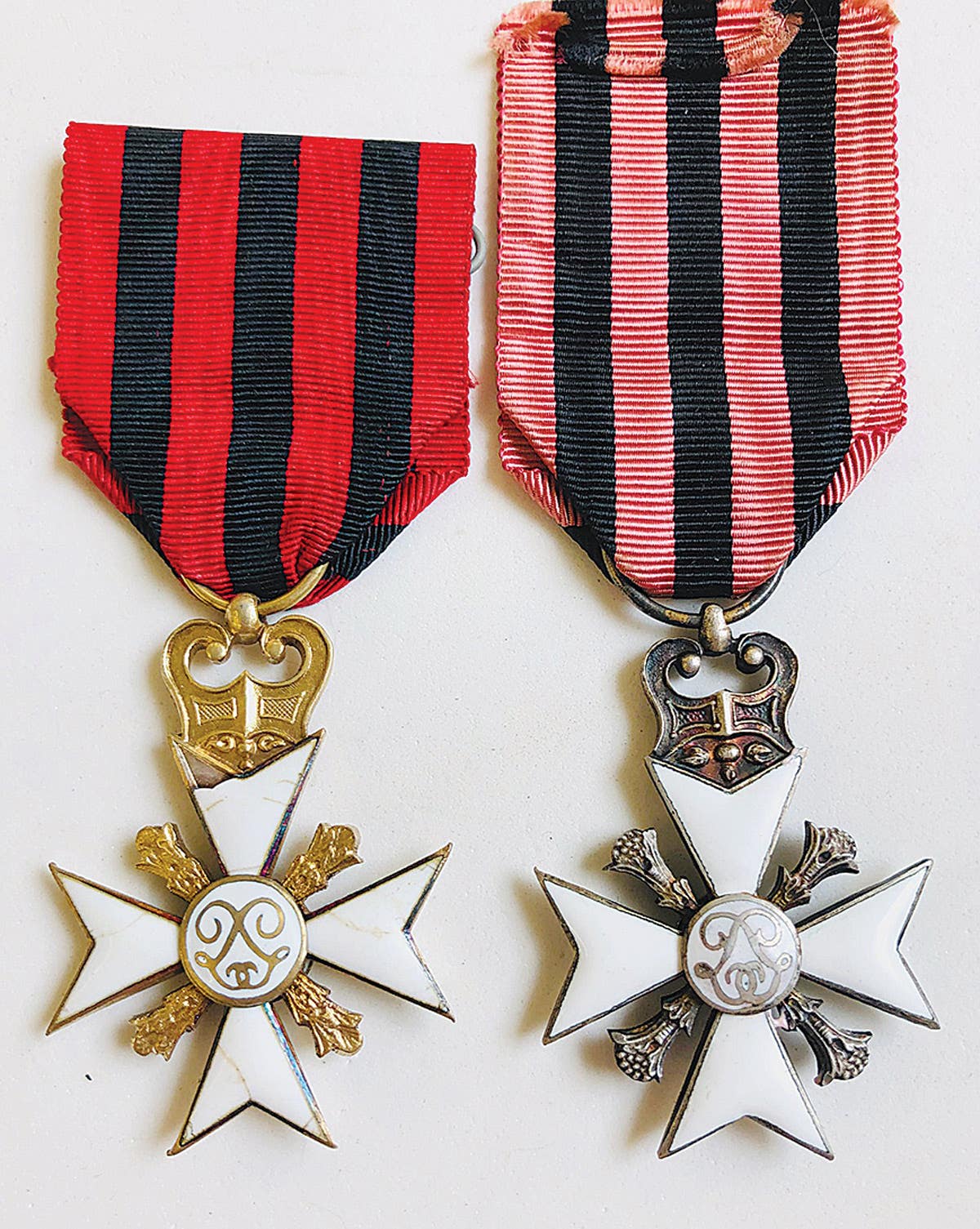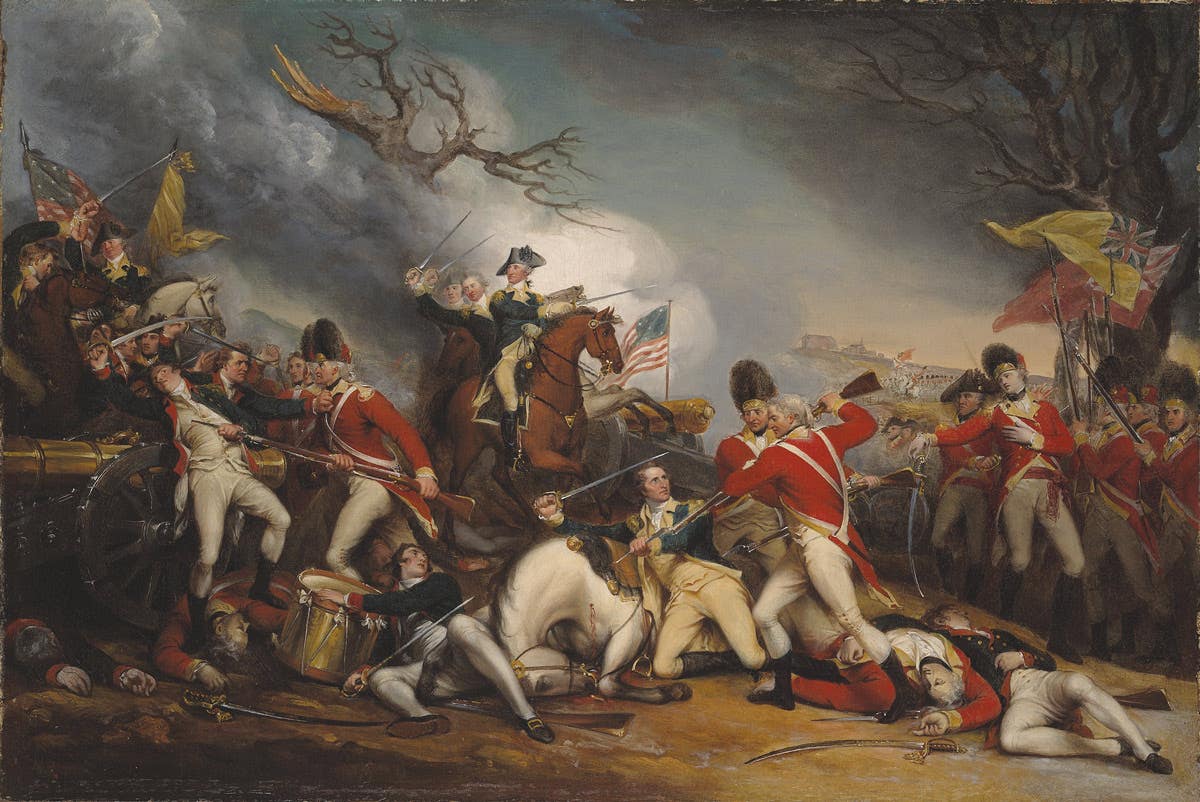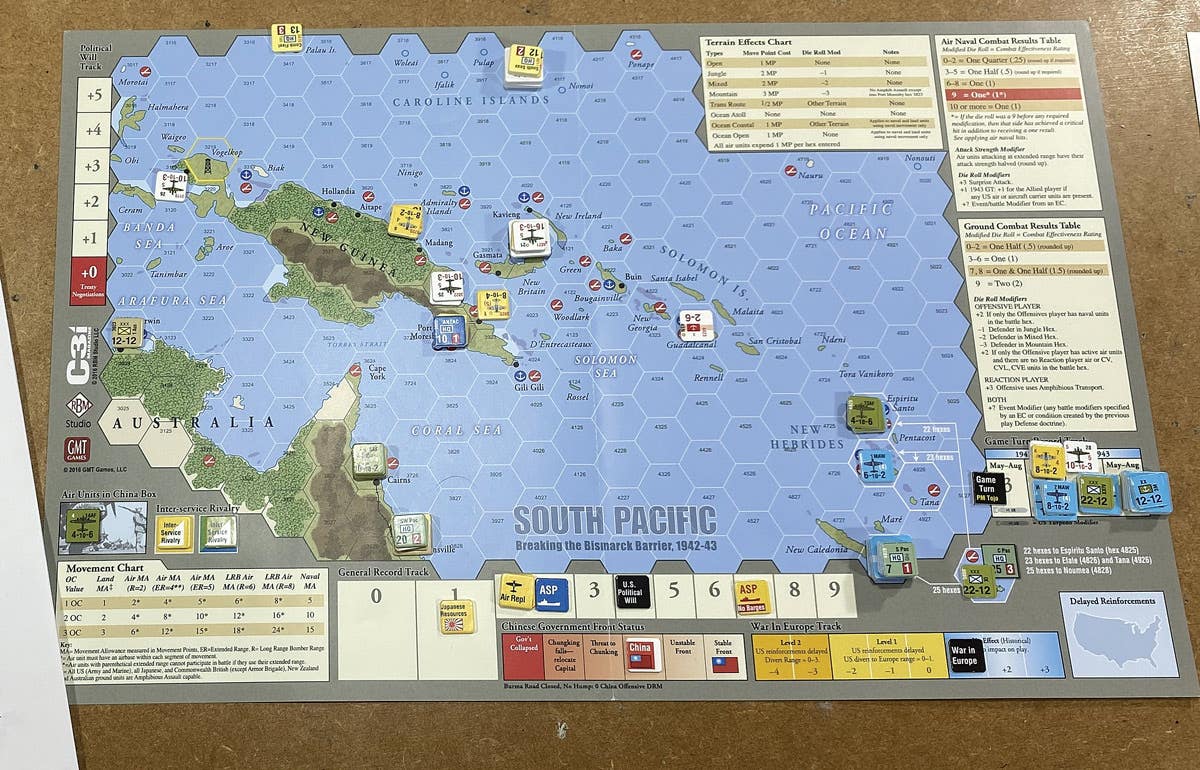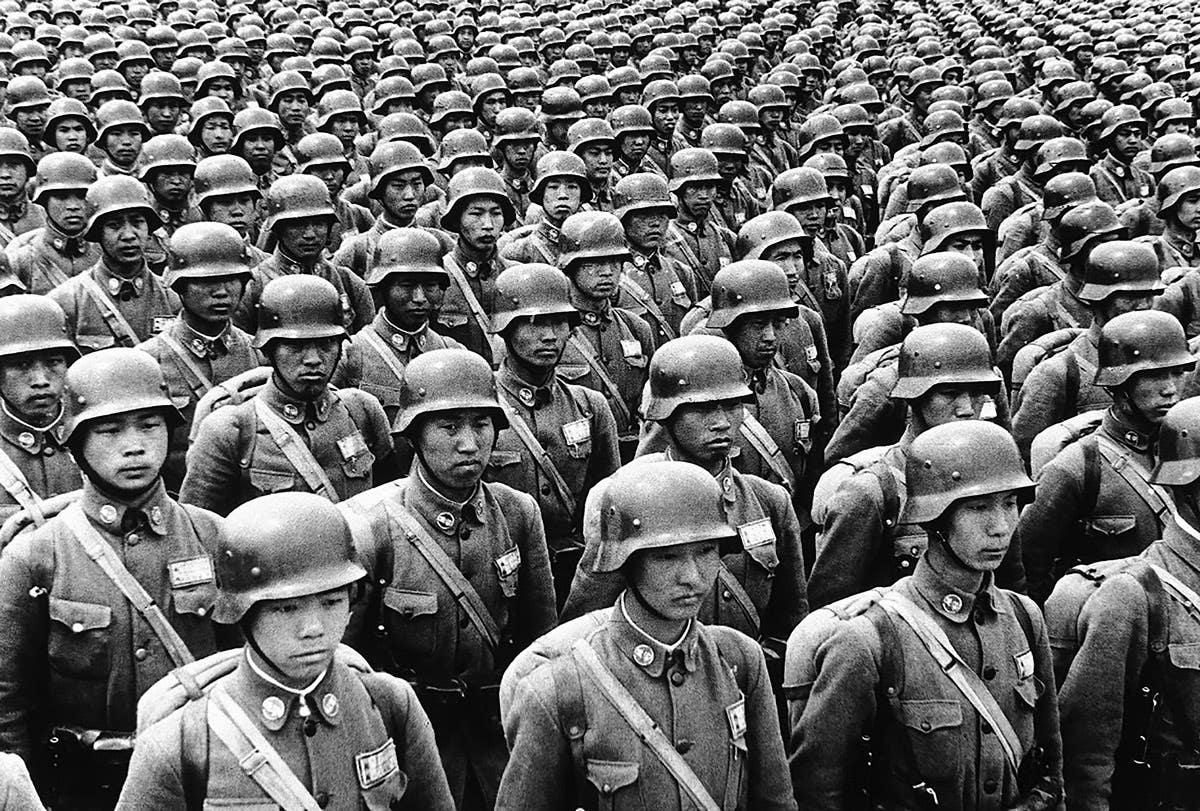Sicherheitsdienst: In the shadows of the Holocaust
As part of this elite SS corps, the “Sicherheitsdienst’ (SD), a department for SS intelligence had been created in the summer of 1931.
When Adolf Hitler led his “Nationalsozialistische Deutsche Arbeiterpartei” to power in 1933, he did so with an army of devoted followers who had dreamed of a utopian Nazi empire in which he, and they, would be part of a dominant “Aryan” people. One of Hitler’s most loyal collaborators and henchmen was Heinrich Himmler, leader of the “Schutzstaffel” (SS), an organization of modern Teutonic Black knights that he had built into one of the most powerful and dreaded groups in the new Third Reich.
As part of this elite corps, the “Sicherheitsdienst’ (SD), a department for SS intelligence had been created in the summer of 1931. A year after its inception, the fledgling SD had only 33 full-time employees and a number of informants under the leadership of Reinhard Heydrich, a meticulous and ruthless administrator who would develop the small group into a large confederation of spies, bureaucrats and murderers. Young, impressionable professionals, versed in law or holding educational degrees (14 percent had received doctorates), and having military experience were sought out and hand selected as the SD crème de la creme of the SS elites. Because of the sensitive nature of the information gathered, members were designated as “Mitglied” (full active members), “Mitarbeiter” (lower-level associates) and “Vertrauensleute”” (V-persons, - office personnel). Sworn to secrecy, full members and associates were assigned a “Chiffre Nummer” (SD code number) and required to carry an SD “Ausweise” (identification card). By 1941, the SD would grow to nearly 7,000 agents covering vast areas both inside the old German borders and across the greater part of Europe.
The first assignments of the SD dealt with accumulating intelligence on Hitler’s political enemies, both actual or perceived, and Nazi party officials — including some of the most prominent figures, such as Goebbels, Goring, Hess and Hitler, himself. Those considered enemies of the German people, including Jews, Gypsies, Marxists, Freemasons, Jehovah witnesses and anyone deemed anti-social or not “German” enough, were catalogued in massive files kept within the SD office archives. These could later be used to blackmail individuals as the need arose, or to make up later killing lists as was done before the 1934 “Night of the Long Knives”, a purging of the Sturmabteilung” (SA) leader Ernst Rohm, hundreds of his top SA men and other victims chosen by Himmler and Hitler. During this mass execution, members of the SD not only created the lists, but also participated in the brutal murders which Hitler would later justify to the German public as his stopping a criminal overthrow of the Nazi government.
As the power of the regime grew, so did the SS and the SD. In 1936, Hitler gave Himmler the additional appointment of head of the German police. Himmler then developed the “Kripo” (criminal police) and the “Sipo” (Sicherheitspolizei” - Security police and the “Geheime Staatspolizei” — “Gestapo”— State Secret Police), two departments with different operating characteristics. The working concept was that the SD (a Nazi political organization) would investigate suspects and the Kripo or Sipo (actual trained police forces) would arrest them. Because of overlying actions between these groups in the field and outright acts of divisive competition, the SD and arresting forces did not always get along well during the first few “peace” years.
With Austria and Czechoslovakia in his sights, Hitler began his move to incorporate these two countries into the Reich by using the SD and other clandestine elements while playing the “cat and mouse” game of deceptive politics. In Austria, SD agents distributed propaganda leaflets, organized demonstrations against the government and carried out terror attacks targeting political rivals. The operation carried out in the Czech Sudetenland was similar, although the Czechs had their own secret police who were able to thwart many of the early Nazi tactics in the field. To step up the attack, Heydrich instituted “Case Green”, an overall effort with SD/Gestapo agents using local associates, their own family members and advance technical espionage equipment (cameras and hidden microphones) to gather vast amounts of information on Czech governmental, public, military organizations and installations.
The SD was not the only player in the field of covert operations. The German military intelligence service, the “Abwehr”, headed by Admiral Canaris, was in strict competition with the Nazi party sanctioned organization, gathering intelligence about enemies within and outside of the country. Canaris, a closet anti-Nazi, did not want to give too much valuable information to the regime he detested, and feared that some of his own force may not stand up to the racial scrutiny of the SS machine. As such, their paths crossed frequently, causing disruption to both parties and a growing dislike, compounded by Himmler and Heydrich’s plans to absorb the Abwehr into their own organization. As the SS and SD power grew, the Abwehr’s influence decreased, eventually being relegated to a secondary position as resources were channeled to their adversaries.
In 1939, the SD and the SIPO were combined under the “Reichssicherheitshauptamt” (Reichs Security Main Office – RSHA), making the cooperation and the coordination between the SD and the Gestapo much easier. This proved most beneficial the same year when the war began on the Polish border, and Hitler’s dream of annihilating millions to gain “Lebensraum” for the “Volksdeutsche”, land to grow for the people of “German blood”, began to become a reality.
The SD lit the fuse for the European war in August 1939 through “Operation Himmler” (aka, “Operation Konserve”). SD and SS men dressed in Polish military uniforms stormed the Gleiwitz radio site along with railway stations and forest service posts along the border. While there, they broadcasted anti-German messages in Polish, fired their weapons and generally terrorized the local German inhabitants. As they left, they deposited dead concentration camp prisoners dressed in Polish uniforms to give the impression of a failed border invasion by Polish troops. This would give Hitler and the German military (already pre-prepared well in advance) the excuse to attack Poland as an act of self-defense.
Even before the border incident and invasion, the SD and SS had begun making the” Sonderfahndungsbuch Polen” (Special Prosecution Book-Poland) for the “Unternehmen Tannenberg” (Operation Tannenberg) which listed 61,000 Polish leaders, intellectuals, clergy and partizans to be executed in the wake of the Nazi forces. The invasion was seen as an opportune time to kill these people, as their deaths could then be categorized as war casualties to the German people and foreign governments, not the outright murders that they really were. The initial acts of violence, though horrendous as they were, would be dwarfed by what was to follow as the Nazis swept across Europe.
BELOW: A rare SD drill tunic for an SS Rottenfuhrer, with old style screw back shoulder boards from the SS VT era, false French cuffs and faux upper pockets. (Found at a flea market in Poznan, Poland in 1980.)
In 1941, the SD was divided into two branches, the interior “SD-Inland” and the foreign based “SD-Ausland”. The Inland division was responsible for surveying the Nazi’s political enemies within the Reich and measuring the “mood” of the German people. Hitler, the consummate politician to the end, always paranoid and anxious about being overthrown, worried that his actions, sometimes overtly ruthless, would be accepted by the general German population. The Ausland division teamed with the SS, the police, the Wehrmacht and local foreign groups would bring the genocide of millions to fruition. As the German war machine continued to take more lands, the SD and the SS formed the “Einsatzgruppen der Sicherheitspolizei und des SD”, (“Einsatzgruppen”), the mobile killing forces tasked with the murder and deportation to labor or death camps of Jews, Gypsies, Communists, P.O.W.s and those not deemed worthy to be part of the German “Volk”. Einsatzgruppen members were recruited from the SD, the Gestapo, Kripo, “Orpo” (Ordnungspolizei – ordinary uniformed police) and the Waffen-SS (armed military SS). They, along with the Gestapo followed the Wehrmacht troops across Ukraine, Crimea, Poland, Lithuania, Russia and the other countries of Eastern Europe, where they routinely shot thousands of people, herded others into filthy and cramped ghettos to be starved and succumb to disease, or shipped to concentration camps, there to be worked to death for the financial gain of the SS, or disappear into the gassing showers, crematories or hidden shooting pits.
While often doing their devious work in plainclothes, SD men in uniform wore the same as those of the Waffen-SS, a green-gray four pocket tunic and matching pants. SS rank insignia were worn and an “SD Raute” (diamond shaped patch) and SS eagle were sewn to the left sleeve. The right black collar patch was devoid of SS runes as were the blank cuff titles. Black belts, boots and the Waffen-SS headgear of gray/green overseas caps or elegant visors with “Totenkopf” (deaths head) insignia topped the uniforms that gave these men a well-deserved ominous appearance. Those who participated in the Einsatzgruppen killing operations used Waffen-SS helmets, field gear and weapons.
and those caught harboring Jews will also be put to death. Chris William
By 1945, whole communities had been killed in the streets, fields and murder factories of Hitler’s Third Reich. In Poland alone the pre-war 3.3 million Jewish population was reduced to a post-war number of about three hundred thousand, two-thirds of whom had escaped to Russia and no longer lived in their native country. During this time of unspeakable depravity, the Sicherheitsdienst had done more than their share to create a “Hell on Earth” for their innocent victims. With Hitler dead and the Reich in collapse, a hunt began for some of the worst offenders involved with the carrying out of the “Final Solution”. The SD was categorized as a criminal organization and many members were captured, tried and executed for the parts they had played in the systematic depredation of countries and the murder of millions.
{Note: The author would like to thank Mark Pulaski for sharing his rare collection and knowledge with the collecting community.}
Chris William has been a long-time member of the collecting community, contributor to Military Trader, and author of the book, Third Reich Collectibles: Identification and Price Guide.
"I love to learn new facts about the world wars, and have had the good fortune to know many veterans and collectors over the years."
"Please keep their history alive to pass on to future generations".







